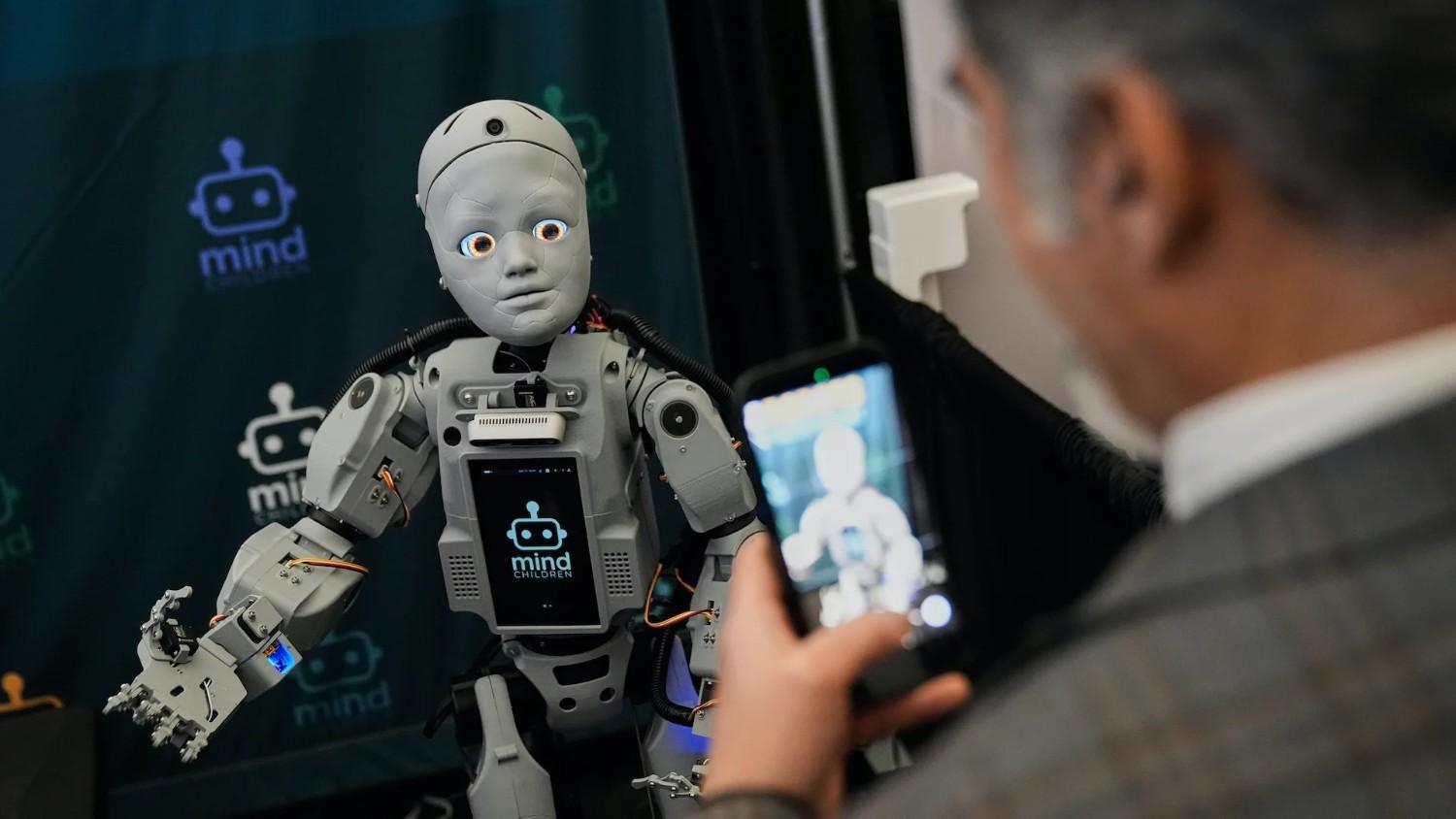- | 9:00 am
How ready is the Middle East for its metaverse take-off?
With a young population comprising one of the largest gaming markets globally, the popularity of the metaverse depends on how well brands leverage the potential, say experts.

The metaverse — a blended platform that will leverage immersive tools to create a digital reality — has attracted Middle East giants to commit millions to claim their stakes in the space. The global metaverse market valued at $47.69 billion in 2020 is projected to reach $828.95 billion in 2028, with an annual compound rate of 43.3%, a report states. But how well prepared are brands in the Middle East for the digital opportunities present there? Are users ready for the transition to creative technology?
Experts discuss how the region’s growing youth population will propel the success of brands in the new digital arena.
FASHION INDUSTRY’S NEW TREASURE CHEST
The luxury sector’s edge in the physical world is different from how high-end fashion in the metaverse will be defined. Luxury creative technology company Bureau Béatrice, which has branches in UAE and Saudi Arabia, and has worked with Adidas, Chanel, Dior, and Louis Vuitton, says the metaverse challenges the traditional marketing rulebook.
“The metaverse opens the realm of possibilities. From a brand language standpoint: We will be free of the constraints of reality. From an engagement standpoint: You’ll see more and more brands measuring the entertainment value of their marketing versus debating whether they will be able to retain their audience beyond the 3 seconds pre-roll. We’re entering a Netflix-brand-bingeing era, so it’s now up to the brands to get the attention they desire,” says Jon S. Maloy, Co-Founder & Creative Director, Bureau Béatrice.
The new era of fashion is also ushering in a new wave of creative thinking, and brands must stay abreast of consumer trends. “The rise of a phygital world has unleashed the creative power of luxury brands. Today, they get to tell the same stories they’ve always told, but this time around, they get to do it in 3D immersive, maximalist experiences,” Maloy adds.
In 2019, Bureau Béatrice accompanied Cartier to launch the Santos timepiece collection in the region. Rather than only telling their guests about the Santos Dumont aviator through pictures and archive pieces, the Maison took them on a poetic ride through a VR experience. Maloy explains, “In a few minutes, guests felt like they were part of the story. Cartier understood that more than a logo, it was an emotion that would help manifest the symbolism they were after.”
The metaverse represents a whole new universe of possibilities for creators. It represents an opportunity to democratize and decentralize industries such as fashion that have legacy brands ruling for decades. Conversely, it challenges legacy brands to alter their approach. “A metaverse brand experience is first and foremost a complete holistic experience, one that brings to life retail, content, gaming and in doing so in an entertaining way. Companies with a purpose that captures their brand’s heart and soul rather than what they sell will have an awesome time. Those who live by their product calendar, less so,” he says.

[Image Courtesy: Nike]
Cashing in on the metaverse requires a fine balance that won’t take away from the luxury aspect of legacy fashion brands. “As a luxury group, it is essential that we always keep in mind that we balance aspiration, inspiration, and innovation with accessibility. So as a luxury company, we want to be where the consumer is, where she wants and expects us to be. We need to be certain we don’t throw away the luxury image of the brands we represent,” says Nick Vinckier, Head of Corporate Innovation at the Chalhoub Group, one of the largest luxury retailers in the Middle East.
Currently, the fashion industry is divided between early adopters and those taking a more subtle approach. Vinckier explains the distinction as two different strategies luxury brands use to attract customers. On one side of the spectrum, French luxury goods brand Kering is diving right in with NFTs and metaverse developments. On the other hand, LVMH is adopting a more cautious approach, studying the market with a plan ready to capture customers when the metaverse space becomes more mainstream.
“I’m just saying these are two different approaches. What we want to achieve in this new Web 3.0 environment for the Chalhoub Group is clear. We’re clear that this might be the next big thing, and we need to prepare ourselves before mass adoption picks up so we are ready when it’s needed the most.” The Group announced its entry into the metaverse last week with the first NFT drop by luxury tableware brand Christofle. The NFT collection is reflective of Christofle’s 200-year brand heritage and reflects a city of silver and gold. A total of 529 NFTs will be available on the Exclusible website for 0.1 ETH starting May 7, 2022.

[Image Courtesy: Christofle]
The metaverse, in many ways, has made way for individual creators to have a level playing field with the industry’s legacy houses that have years of brand loyalty behind them. This unique equation has also forced luxury brands to keep innovation and new platforms of buying and selling, such as the metaverse, on their priority list to meet future customers. However, the metaverse and its clientele are sharper and more intuitive than ever.
How must creators navigate in the region navigate this arena? “If you’re in it for the money, you will fail miserably. You need to understand the community. You need to do it for the right reasons because you want to experiment and connect with a new market; you want to be virtually more accessible to an audience. Brands need to understand that when you launch an NFT project, you sell a smart contract to a customer, which is the start of a relationship,” Vinckier explains.
Brands must keep in mind the long relationship that they begin with customers. They need to be aligned internally and educate their employees on the long-term vision of entering a new space, such as the metaverse.
VIRTUAL MONOPOLY WITH A COGNITIVE CITYSCAPE
Metaverse real estate has already gained popularity globally. In the Middle East, the sector will attract users looking to buy property, and own metaverse homes to display their digital assets or long-term investments.
Demand for the real estate and development sector will dominate, with major companies announcing big stakes. Earlier this year, NEOM Tech & Digital Company – the first subsidiary of NEOM – launched XVRS, a 3D cognitive digital twin metaverse platform with a mixed-reality urban living model. Combining digital and physical architectures with hyper-connected technologies and AI features, XVRS will integrate the virtual and real worlds. XVRS aims to offer users “multiple points of view” and the ability to feature various locations across the metaverse in real-time (via teleportation) as an avatar, hologram, or robotic avatar.
“Our goal is to be the world’s largest cognitive technology enterprise that fits with Saudi Arabia’s 2030 Vision of being not just a consumer but an exporter of technology,” says Joseph Bradley, CEO, NEOM Tech & Digital Company.
The digital cognitive twin that seeks to provide a bridge between the virtual and the real world is representative of the kingdom’s ambition to innovate. “Unlike the physical world, the cost to build things in the digital world is far less. And so, the economics of how a city operates, how you develop land, or how you operate a city changes platform economics. It becomes an economic engine for growth. The more people participate, the more valuable the platform becomes,” Bradley adds.
To build a robust XVRS, there is an enormous investment in talent. Equally important is to create a culture that supports an innovation mindset that attracts and retains entrepreneurs. “Nothing starts without having the world’s top talent. We understood that within the tech and digital holding company, we have to build a culture that attracts not employees but entrepreneurs. This is an entrepreneurial company because we are by definition creating and building things that don’t exist,” he adds.
Another critical component of success for a cognitive technology company is building customer trust based on a robust end-to-end consent management platform. The next element involves future-proofing the company and accounting for Black Swan events and chaos and unpredictability.
Interoperability between metaverses will define the success of the concept as a whole. The lack of the ability to port between metaverse platforms is the same as visiting Disneyland, with every ride having a different ticketing system. Bradley explains this may be a limiting factor for technology companies in the future.
“We need to create concrete monetization opportunities where users can view and interact with an apartment, buy digital assets, show up as an avatar and engage with people,” Bradley adds.
For the future, Bradley says there’s a lot of work to be done with an equally big ambition. “For NEOM, I envision an entirely new economic model that the world’s future cities will gravitate toward. This phenomenon of XVRS can literally eliminate the digital divide from our vocabulary. It truly can give every child, no matter where they’re born, no matter what color they are, wherever they are, an opportunity to be great. What’s cool about the XVRS is it recognizes our differences but focuses on our similarities. It focuses on our common good to create something that’s really, really special,” Bradley says.
Raising the flag for a world without borders, Bradley envisions “a world with no digital divide, no kid left behind, and many smiling faces.”
ENHANCING PHYSICAL WELL-BEING VIRTUALLY
Meanwhile, telemedicine has opened a digital window to facilitate remote consultations for patients in the Middle East. Digitized medical records, e-prescriptions, and online pharmacies are parts of a virtual healthcare ecosystem. But the metaverse will take things up a notch by enabling VR surgeries, where doctors can rehearse operations.
Professor Shafi Ahmed was the first to live stream a cancer surgery using virtual reality as early as 2016. He then embraced the metaverse, joining colleagues from different parts of the world using Hololens. The surgeon, who also spoke at the Arab Health Exhibition in 2019, said that his company, Medical Realities, builds educational content for medical students, doctors, and healthcare workers.
“We are also building platforms for AR remote collaboration using Hololens 2.” Highlighting an approach that combines healthcare and education, Ahmed adds, “we’re building a healthcare city in the metaverse, our ‘metaversity’.”
Explaining how metaverse can provide better healthcare in remote regions, Ahmed says, “Since most of the technology now can work on low bandwidth and stream, now you can do telementoring or train remotely using fairly low latency.
His vision offers clarity about a future where medical students get an in-depth look at procedures without interrupting surgeons in the metaverse. The UAE has already witnessed a collaboration between surgeons from 13 countries using VR headsets.
Also,Read What will the metaverse actually look like in 5 years? This studio may have cracked it here.
A DOMINANT FORCE IN THE DIGITAL UNIVERSE
Numbers speak of the sheer potential of the metaverse to take off in the region. “Saudi Arabia has 65% of the country under the age of 35. This region can become a cognitive power and leverage cognitive technologies globally. When you take XVRS, the youth and their excitement, and the synergies with gaming, this region can become the cognitive exporter of technologies. XVRS is a start. It’s super exciting, energizing, but we have to ensure that we can accelerate that learning curve,” Bradley adds.
The Middle East’s tech-savvy younger population is indicative of the popularity of metaverse. “If you look at the Middle East’s mobile-driven youth, with a high purchasing power, compared to other regions in the world, you can safely assume that the adoption of Web 3.0 will be high compared to other parts of the world,” says Vinckier.
If one were to translate the gaming potential of Saudi Arabia to Web 3.0, it’s safe to assume that the Middle East will be a clear front runner of the metaverse, the experts say.
Read more related technology articles in our technology section here.








































